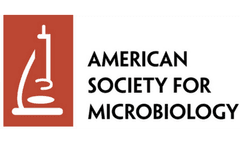Rna Interference Articles & Analysis
19 articles found
The creation of custom knockout cell lines involves several advanced techniques, including CRISPR-Cas9, TALENs, and RNA interference. Methodologies for Creating Custom Knockout Cell Lines CRISPR-Cas9 Technology: CRISPR-Cas9 has revolutionized genome editing due to its simplicity and efficiency. Researchers design guide RNA (gRNA) that directs the ...
Overview of dsRNA dsRNA molecules consist of two complementary strands that form a helical structure, resembling the double helix of DNA. They play a critical role in RNA interference (RNAi), a biological process used by cells to regulate gene expression and defend against viral infections. ...
For example, companies are exploring the use of broad-spectrum antivirals that can inhibit multiple strains of viruses, providing a safeguard against emerging viral threats. RNA-Based Therapeutics RNA-based therapies, particularly those employing RNA interference (RNAi) and antisense oligonucleotides, are making significant ...
Mechanisms and Biological Roles RNases are pivotal for RNA metabolism, encompassing RNA processing, degradation, and interference. ...
What Is RNA Splicing? RNA splicing is a post-transcriptional modification process that occurs in eukaryotic cells. ...
RNA modifications can structurally alter the pairing of nucleobases, leading to structural rearrangements of RNA and thus regulating the function of the molecule. ...
What Is RNA Splicing? RNA splicing is a post-transcriptional modification process that occurs in eukaryotic cells. ...
By combining these genetic modifications with other techniques, such as RNA interference or CRISPR-Cas9 gene editing, researchers can gain deeper insights into the complexities of cellular biology. ...
Small RNAs are important functional molecules in organisms, which have three main categories: microRNA (miRNA), small interfering RNA (siRNA), and piwi-interacting RNA (piRNA). They are less than 200 nt in length and are often not translated into proteins. Small RNA generally accomplishes RNA ...
Silence Therapeutics, a pioneer in the development of novel small interfering RNA (siRNA) therapeutics, and Mallinckrodt plc, a global biopharmaceutical company, announced the submission of a clinical trial application (CTA) for SLN501, a siRNA therapy targeting the complement C3 protein, on March 23, 2022. Silence will receive a $3 million milestone payment from Mallinckrodt ...
The silencing phenomenon in eukaryotic microorganisms can be divided into two categories, transcriptional gene silencing (TGS), and post-transcriptional gene silencing (PTGS) which is known as RNA interference or co-suppression. In TGS, no targeted gene transcript is created while in PTGS, transcripts are produced but degraded before translation. ...
There are three key points in the research and development of RNA drugs: First, the immunogenicity of RNA drugs: because exogenous RNA will be recognized by the immune system as the signal of virus interference, RNA drugs will more or less stimulate the immune system, and then cause a series of side effects. ...
Three types of editosomes, each with an identical core containing six related KREPA proteins, catalyze the U insertion and deletion RNA editing of mitochondrial mRNAs in trypanosomes. Repression of expression of one of these, KREPA3 (also known as TbMP42), shows that it is essential for growth and in vivo editing in both procyclic (PF) and bloodstream (BF) life cycle stages of ...
In cells that normally skip exon IIIc, skipping was disrupted when RNA interference was used to knock down both hnRNP H and hnRNP F. We show that an exonic GGG motif overlapped a critical exonic splicing enhancer, which was predicted to bind the SR protein ASF/SF2. ...
Here, we identified the cytosolic soluble P-loop NTPase termed huNbp35 (also known as Nubp1) as an Fe/S protein, and we defined its role in the maturation of Fe/S proteins in HeLa cells. Depletion of huNbp35 by RNA interference decreased cell growth considerably, indicating its essential function. ...
Here we report that 2-deoxyribonolactone (dL), a major type of oxidized abasic site, inhibits replication by mitochondrial DNA (mtDNA) polymerase and interferes with SP-BER by covalently trapping polymerase during attempted dL excision. ...
Instead, Rin loss attenuates PACAP38-mediated HSP27 activation by disrupting a cAMP-protein kinase A cascade. RNA interference-mediated HSP27 silencing suppresses both PACAP38- and Rin-mediated neurite outgrowth, while expression of a constitutively active Rin mutant increases both HSP27 protein and phospho-HSP27 levels, supporting a role for Rin-HSP27 signaling ...
Primary mouse embryonic fibroblasts were generated from a dematin headpiece domain null (HPKO) mouse, and the visualization of the actin morphology revealed a time-dependent defect in stress fiber formation, membrane protrusions, cell motility, and cell adhesion. Rescue experiments using RNA interference and transfection assays revealed that the observed ...
Natural antisense transcripts and intergenic transcription have been involved in many aspects of eukaryotic gene expression, including genomic imprinting and RNA interference. However, apart from the identification of some IGF2 antisense transcripts, few data are available on that topic at the H19/IGF2 locus. ...







